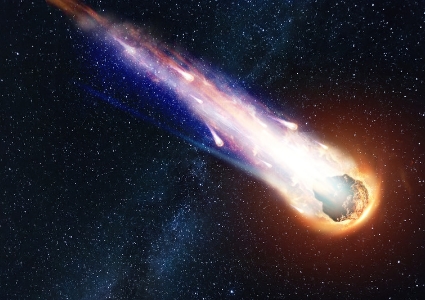Polling

Suggest an important issue not listed in this sub-category (). (Maximum 60 Characters)
Planetary defense

Earth's atmosphere protects us from asteroids and comets that are up to 50 yards in diameter. Astronomers estimate there are at least 1 million near-earth asteroids (NEA) of this size, and more than 1,000 asteroids with diameters of at least half a mile that could impact our planet and cause widespread devastation. Catastrophic damage will occur if one of these objects collides with our planet. Massive wildfires, towering tidal waves and extreme weather are the likely results of a large asteroid strike. Astronomers warn it is only a matter of time before this occurs. One recent strike was the 60-foot, 11,000-ton Chelyabinsk meteor over Russia in 2013 which entered the atmosphere at 41,000 mph, damaged 7,200 buildings and injured 1,500 people. It exploded 14 miles above ground in a deafening blast that was 20 times more powerful than the Hiroshima bomb. This small meteor arrived totally undetected because it was made of a dark non-reflective substance, had a shallow angle of approach, and no one with a telescope was looking for it. Experts say that if Chelyabinsk had struck ground in a major city, many hundreds or thousands of deaths likely would have ensued.
Oddly enough, on the same day of the Chelyabinsk meteor, an asteroid named 2012DA14 flew past the earth. This rock, roughly half a football stadium in width, flew close enough to the Earth as to pass beneath our communication satellites. Astronomers and astronauts claim these events are further proof that our planet needs a defense against large asteroids. They claim it is possible an asteroid’s trajectory, particularly one arriving from the Southern Hemisphere, could bring it on a collision course with our planet with practically no advance warning. They say that for the first time in human evolution, we have the ability to protect our planet from asteroids and their ensuing catastrophes. Many wish to develop a means to detect, analyze and deflect or destroy large NEAs. Asteroid fragmentation methods include the use of kinetic, gravitational, solar or nuclear energy. Deflection methods include gravity tractors, laser cannons and the attachment of rockets or mass drivers to the NEA.
A recent NASA experiment that crashed a spacecraft into an asteroid successfully changed the path of the orbiting object in 2022. The operation was called the Double Asteroid Redirection Test, or DART. The DART spacecraft crashed into an asteroid called Dimorphos, a small “moonlet” that orbits a larger asteroid named Didymos, about 11 million kilometers from Earth. Dimorphos was completing one orbit around Didymos every 11 hours and 55 minutes. After the crash, the orbital period was reduced by 32 minutes, to 11 hours and 23 minutes.
Proposed Legislation: Introduction of legislation authorizing NASA to develop and deploy a planetary defense system.
Prospective Sponsor: Rep. Bill Posey (FL)
Oddly enough, on the same day of the Chelyabinsk meteor, an asteroid named 2012DA14 flew past the earth. This rock, roughly half a football stadium in width, flew close enough to the Earth as to pass beneath our communication satellites. Astronomers and astronauts claim these events are further proof that our planet needs a defense against large asteroids. They claim it is possible an asteroid’s trajectory, particularly one arriving from the Southern Hemisphere, could bring it on a collision course with our planet with practically no advance warning. They say that for the first time in human evolution, we have the ability to protect our planet from asteroids and their ensuing catastrophes. Many wish to develop a means to detect, analyze and deflect or destroy large NEAs. Asteroid fragmentation methods include the use of kinetic, gravitational, solar or nuclear energy. Deflection methods include gravity tractors, laser cannons and the attachment of rockets or mass drivers to the NEA.
A recent NASA experiment that crashed a spacecraft into an asteroid successfully changed the path of the orbiting object in 2022. The operation was called the Double Asteroid Redirection Test, or DART. The DART spacecraft crashed into an asteroid called Dimorphos, a small “moonlet” that orbits a larger asteroid named Didymos, about 11 million kilometers from Earth. Dimorphos was completing one orbit around Didymos every 11 hours and 55 minutes. After the crash, the orbital period was reduced by 32 minutes, to 11 hours and 23 minutes.
Proposed Legislation: Introduction of legislation authorizing NASA to develop and deploy a planetary defense system.
Prospective Sponsor: Rep. Bill Posey (FL)
Poll Opening Date
November 11, 2024
Poll Closing Date
November 17, 2024
Democracy Rules respects the privacy of your information.
See PRIVACY STATEMENT
See PRIVACY STATEMENT